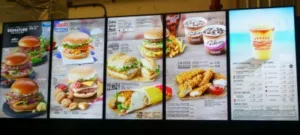NEC Display Solutions held its annual Showcase event in London in May. The event is run with partners and is very strongly directed towards solutions and the added value that NEC can bring with its partners. The emphasis is very much on the partners, although, obviously, lots of NEC displays are used. We visited and spoke to some of the partners. We took the chance to look beyond the display devices themselves.
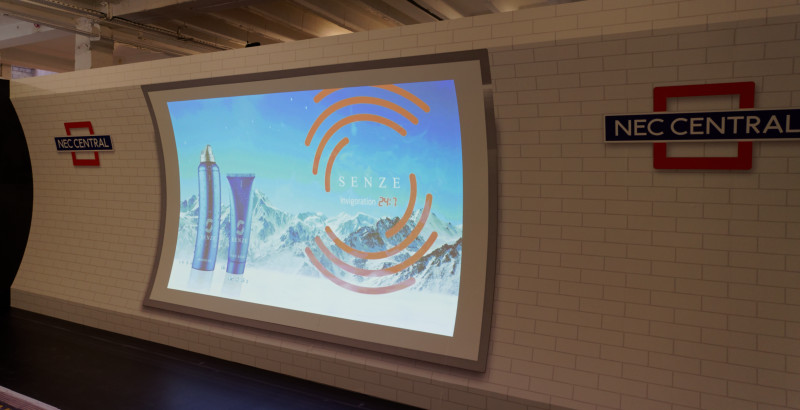 NEC showed this crosstrack example. Image:Meko
NEC showed this crosstrack example. Image:Meko
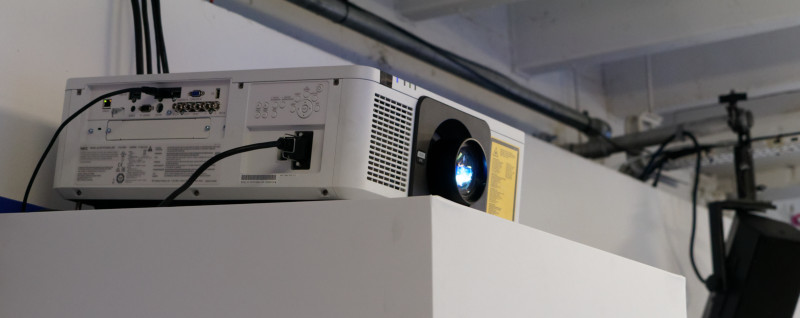 This was the projector used on the NEC Crosstrack demo. Image:Meko
This was the projector used on the NEC Crosstrack demo. Image:Meko
There was a ‘holographic’ display shown at the entrance to the event for live interaction with guests. Following the rule that almost no display that is identified as holographic ever actually is, the system was based on a ‘Pepper’s Ghost’ configuration.
The first company that we talked to was ZeeVee which is a specialist in video over ethernet. We had a somewhat extended discussion about the development of the SDVoE Alliance moves to standardise the technology and to allow costs to come down. We heard that 10Gb switches are coming down to around $100 per port and so the economic arguments for using commodity networking rather than dedicated switchers is getting stronger and stronger. ZeeVee makes use of the Semtech (was Aptovision until the company was acquired – Semtech to Acquire AptoVision) BlueRiver NT+ chip and the technology can support 4K ‘uncompressed’ video over 10Gb switches. We thought that sounded as though there was some light compression and had a discussion about the different ‘light’ codecs that are around. I asked if the DisplayStream Compression (DSC) from VESA was being used, but it seemed not. However, within a day or two of the event, we heard that DSC visually lossless compression is, indeed, part of the technology used. (Packing Them In)
Of course, if you change to a ‘heavier’ codec, such as H.264, you can send video easily over 1G networks, these days.
We had an interesting conversation with Yamaha, which has a big professional audio business, and which took over Revolabs several years ago. Revolabs works on collaboration systems and at the NEC event, the companies were showing the CS-700 soundbar for conferencing that can be added to a ‘dumb’ display to add enough capability for small meetings and huddle spaces (four to six people). The microphones are suitable for users within around 3.5 metres. The connectivity to PCs is done by an optional external DisplayLink dongle, but later the DisplayLink technology will be integrated into the unit. Options include support for SIP voice connections for €100. Software support includes Skybox for Business and a number of others The soundbar includes a camera with 120 deg field of view and costs around €1,250.
Revolabs will have more products for unified communications at Infocomm. The company has customers for its technology such as BMW and EDF for small meetings, while they might use something like the Surface Hub for big meetings.
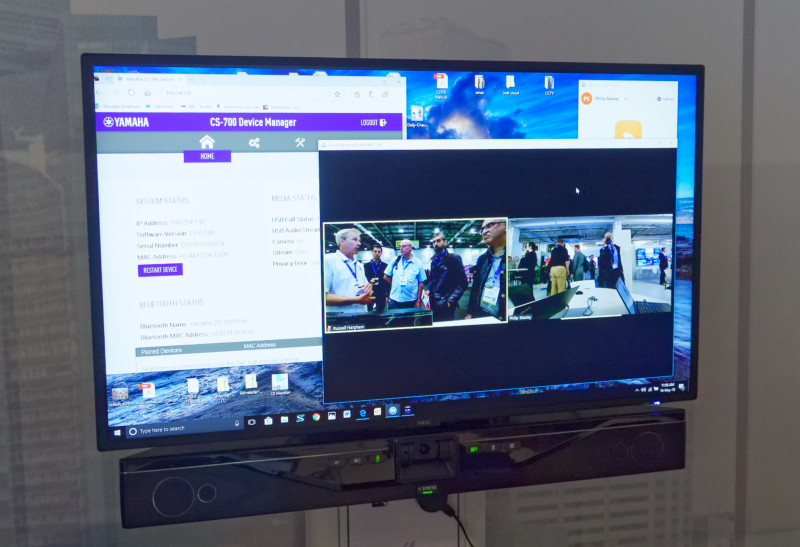 The Yamaha/Revolabs Conferencing Soundbar. Image:Meko
The Yamaha/Revolabs Conferencing Soundbar. Image:Meko
We spoke to Linney which is a company that works in digital signage and has been rolling out menu board systems for McDonalds in the UK. They are going into company-owned and franchised outlets, and there are around 11,000 in the UK. Around 80% have been done (9,000 or so) and each has been, to some extent, customised to the particular store design, so, for example, there are some with landscape and others with portrait displays. Not all of the displays have been from NEC, but most of them have. As well as menu boards, there are digital play screens to entertain younger customers and noticeboard systems.
The company explained that in developing its graphics, “The image always come first” and once that is in place, there is text added. The Linney system will typically be used in five or so different day partitions, with menus changing to reflect the different products being highlighted and promoted as well as the different demographics in the store.
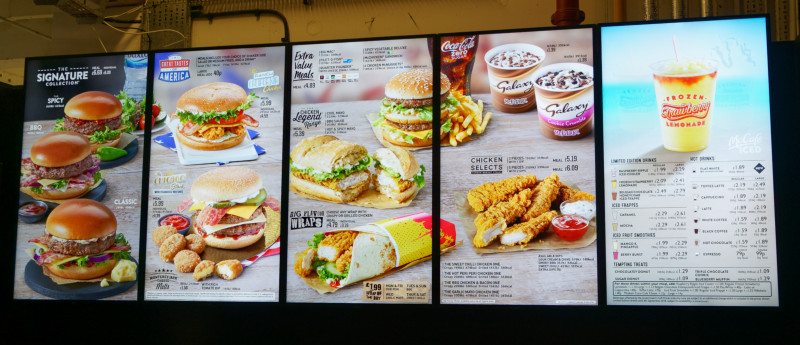 NEC has supplied most of the McDonalds Menu systems. Image:Meko
NEC has supplied most of the McDonalds Menu systems. Image:Meko
In hardware, there were no new projectors at the event, as there were a number of new products highlighted at ISE. We looked at a project that is being tried by Ikea using projection and designed by Beaver. It seems that Ikea has a very high return rates on rugs as people buy them then find that they don’t fit the room they were bought for. A new system showed the buyer how big the rug will actually be. The system is already in three stores and is likely to be installed in others when there is some refreshment or changes in the stores. As well as the projector, there was a touch video wall enabled by Baanto and used by IKEA.
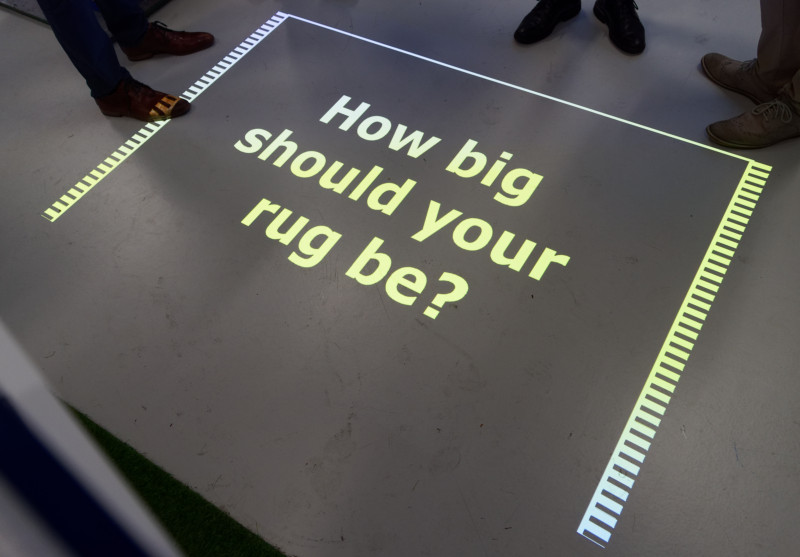 The projector can show the actual size of different mats. Image:Meko
The projector can show the actual size of different mats. Image:Meko
Aaeon (an Asus company, it seems, although we didn’t spot this at the event) had and interesting demonstration of IoT technology being used in a kind of interactive retail environment which allowed analytics to be used to for ‘shelf management’, that is to say, monitoring and analysing products being put and taken off shelves. The system needs to be able to recognise products but we heard that AI in the cloud is ‘simply too slow for real time’. At the event, the solution was to use an Intel Movidius stick (a ‘neural computer’ based on a USB key architecture) to do the processing with an OPS-based or external processor. (Intel to Acquire Computer Vision Company Movidius). Aaeon is an Associate Member of the Intel IoT Solutions group.
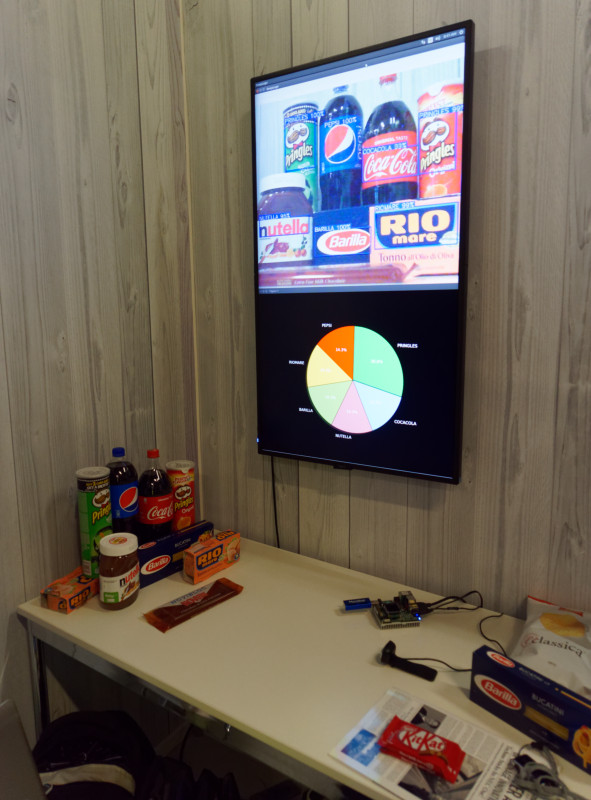 This retail analytics demo showed the use of an Intel Movidius chip. Image:Meko
This retail analytics demo showed the use of an Intel Movidius chip. Image:Meko
Eyefactive was showing a table solution based on an NEC 55″ X551 UltraHD monitor with 3M PCap touch and using the Eyefactive technology to recognise objects fitted with the special bases which can support up to 32 or 64 different types of object. The company can develop full systems with its CMS system hosted on an attached Windows PC.
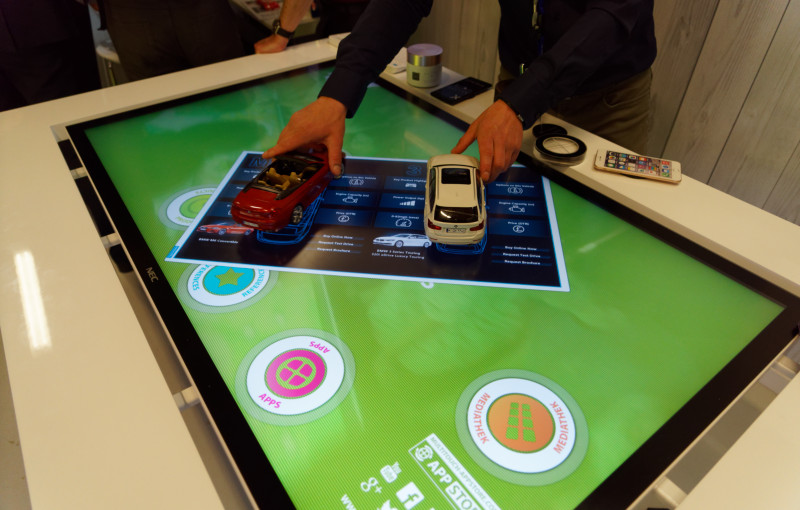 Eyefactive’s touch table is based on an NEC display with 3M PCap touch. Image:Meko
Eyefactive’s touch table is based on an NEC display with 3M PCap touch. Image:Meko
Sennheiser had a couple of interesting technologies for audio at the event. First we had a look at an intriguing replacement for a ceiling tile that uses beam forming mics (29 of them!) in a 60 x 60 cm standard size. The TeamConnect tile can be put into a meeting room and used to capture audio in the room with the system using the beam forming to focus on the current speaker.
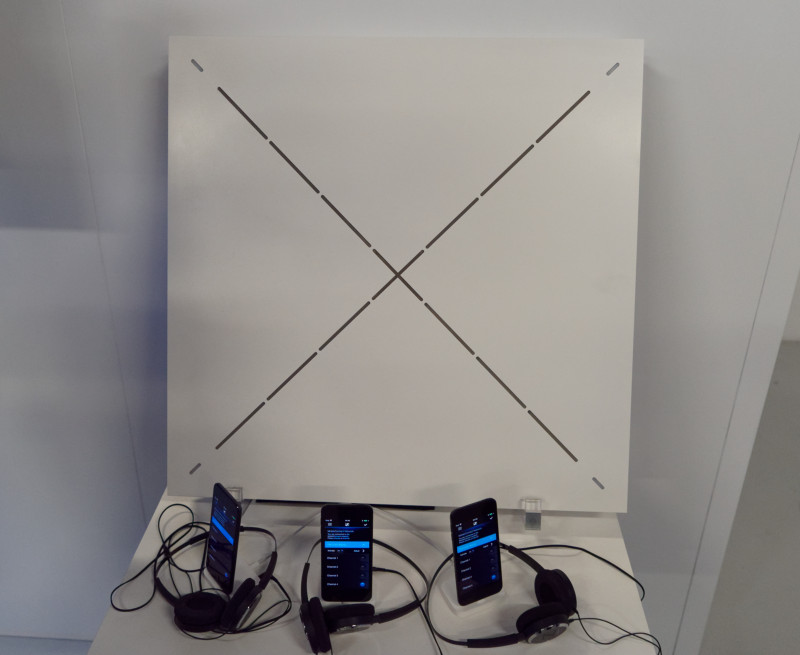 Sennheiser’s ceiling panel has 29 beam forming microphones. Image:Meko
Sennheiser’s ceiling panel has 29 beam forming microphones. Image:Meko
The second demonstration was of audio streaming over Wi-fi. A user can connect using a QR code to attach the audio of their personal device directly to a display using Wi-fi Direct. That allows quiet audio and also can be used in areas such as airport lounges for news, where loud noise might not be appreciated by everybody. Another application is the possibility of providing personalised audio such as different language streams. We have previously heard that museums really dislike having to deal with headset loans and rentals. This system means that this kind of location can allow users to have their own audio using, for example, headsets or earpieces.
The demonstration used an NEC V404-RPi, fitted with the NEC Edition Raspberry Pi 3 Compute Module – the NEC ‘Smart signage’ solution.
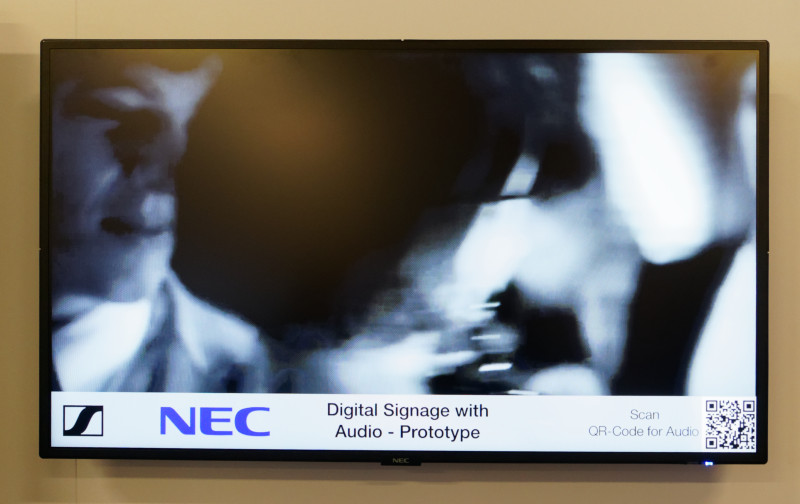 Audio is connected using Wifi Direct from the QR code. Image:Meko
Audio is connected using Wifi Direct from the QR code. Image:Meko
VuCanvas was showing its T1V ‘ThinkHub’ collaboration system (we were surprised that the firm could get a trademark on that, given how many Think… terms that Lenovo uses!). The system has a huge ‘digital canvas’ that can integrate content from other systems or from the firm’s own eight input box which allows systems to be shown in windows on the canvas. The system is built on a Mac rather than being a cloud solution, but the system can support Windows, iOS, Android or Linux devices. A less common feature is that interaction and annotation is bidirectional – either local or remote users can access and modify content.
There are a wide range of connectivity options with integration with Webex, Skype etc as well as control systems from AMX, Crestron and others. The system can be used with single touch panels or multiple touch panels in video wall configurations and the whole desktop can be sent to other systems. Up to ten sites can share a canvas. The cost of the system is £3,000 and there are subscription fees on top.
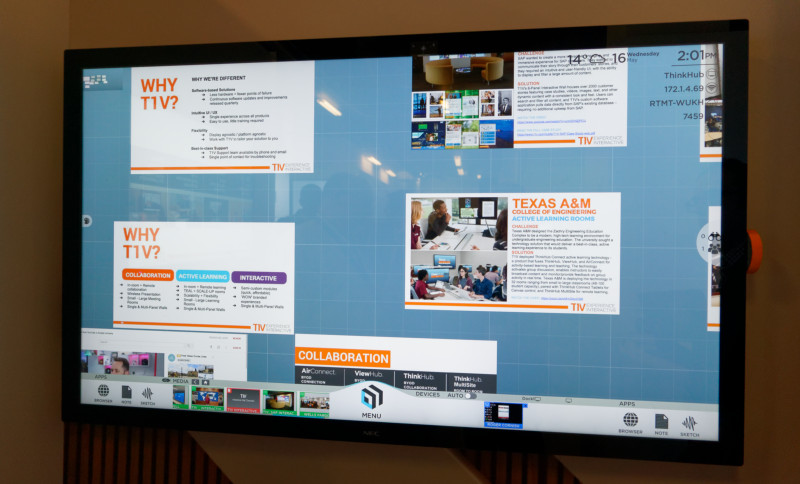
Summary
This is a useful event and NEC does a good job of promoting the products and services of its partners. On the day we visited we had limited time and the reality is that there was probably an interesting story at every one of the 31 partner booths and 45 features. There were demonstrations of a variety of control room systems and some larger displays such as NEC’s LED totems as well as desktop monitors. (BR)
 NEC’s LED Totems. Image:Meko
NEC’s LED Totems. Image:Meko
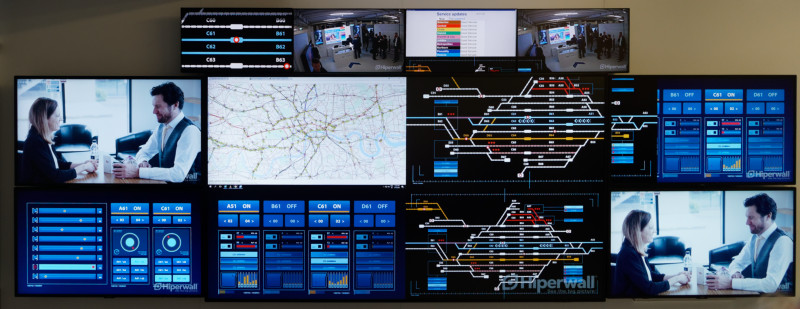 NEC showed several control room configurations. Image:Meko
NEC showed several control room configurations. Image:Meko

